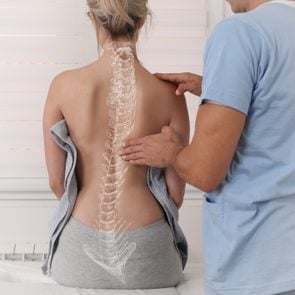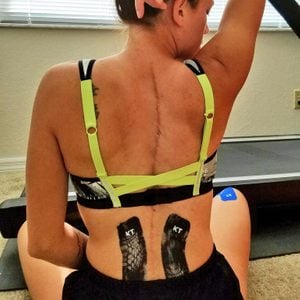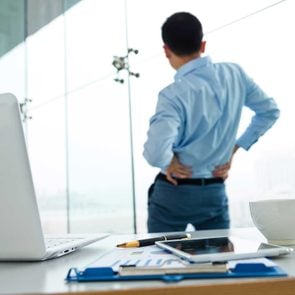The 7 Types of Scoliosis: Everything You Need to Know
Updated: Mar. 11, 2022
Scoliosis, an abnormal curve of the spine, can vary from mild to severe. Learn about the types, symptoms, and available treatment options.
Understanding scoliosis
A diagnosis of scoliosis may be worrisome, especially if you’re the parent of a child or a teen. It’s only natural to wonder whether this will affect your child’s life or require some serious surgery.
The good news: Neither debilitating back pain nor surgery is inevitable. In fact, they’re rarities. Even for adults, mild scoliosis hardly ever causes severe back pain or loss of back function.
So what exactly is scoliosis? Simply put, the lateral spine is curved or twisted. We all have slight curvature in our spines, but some people may have a more pronounced curve.
According to the American Association of Neurological Surgeons, scoliosis affects about six to nine million people. While it’s more common in children, adults are diagnosed with it too.
In some people, the spinal curvature might be barely noticeable, occurring without symptoms.
In others, the curves can progress and worsen. They might cause some pain and need special treatment. And in some rare cases, surgery may be necessary.
Here’s what you should know about the scoliosis types, symptoms, and treatments in adults and children.
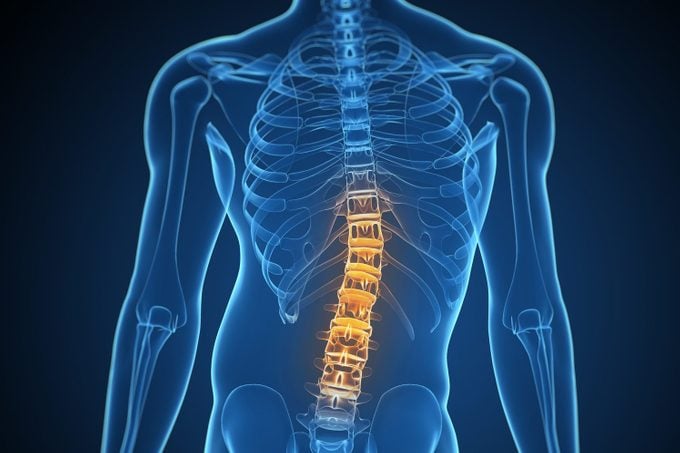
What is scoliosis?
Instead of a straight line down the back, people with scoliosis might have a spine that curves to the left or right and looks like the letter “C,” while others have a spine that curves in both directions, forming an “S.”
This condition predominantly shows up in children when they reach puberty, but it can happen in the womb and adulthood too.
The causes of most types of scoliosis are unknown, but doctors and researchers do know that scoliosis is not caused by some of the popular myths, like carrying heavy packs, slouching, poor posture, or not drinking enough milk.
According to the National Scoliosis Foundation, four out of five people have minor scoliosis, meaning the curve is less than 20 degrees. It’s barely noticeable, rarely painful, and requires no treatment.
Categories of scoliosis
There are three categories into which the different forms of scoliosis fit:
- Idiopathic: “This means we don’t have a specific cause that can be identified,” says Joseph Davey, MD, chief of pediatric orthopedics at the University of Oklahoma. “About 80 percent of scoliosis is idiopathic.”
- Congenital: Spinal deformities are apparent at birth.
- Neurological: Spinal curvature develops secondary to a neurological or muscular disease, such as muscular dystrophy or cerebral palsy.
Signs and symptoms of scoliosis in children
Back pain is rarely associated with scoliosis, and sometimes a curve of the spine isn’t noticeable until the child hits puberty, but some signs might indicate scoliosis.
If one or more of the following signs are detected, schedule an appointment with a doctor for evaluation:
- Tilted or uneven shoulders. One shoulder blade may stick out more than the other.
- The head isn’t centered directly above the pelvis or is slightly tilted to one side.
- One hip is higher than the other.
- An uneven waistline is apparent.
- Rib cages are at different heights.
- The body appears to be leaning to one side.
- The skin over the spine may have color abnormalities, hairy patches, or dimples.
Signs and symptoms of scoliosis in adults
Adult scoliosis begins after puberty, or when the skeletal growth is complete.
More often than not, adult scoliosis is a continuation of adolescent scoliosis. But adults also can develop scoliosis as a natural result of aging.
Sometimes, scoliosis goes undetected in a child, and signs and symptoms aren’t noticed until adulthood.
Adults may experience all of the signs and symptoms of scoliosis that appear in children, plus the following:
- Low back pain and stiffness
- Pinched nerves that cause numbness, cramping, or shooting pain in the legs
- Fatigue from strain on the back and muscles
Types of scoliosis in children
Congenital scoliosis
“The incidence of congenital scoliosis is about one in a thousand births. Many of these may never show enough deformity to get noticed or cause problems,” says Dr. Davey.
The cause of this type of scoliosis is unknown, but during fetal development, bony abnormalities form in the spine. They’re characterized as improper formation of the vertebrae and/or improper separation of the vertebrae.
In addition to a scoliosis curve, the child may develop a compensatory curve, which appears in the opposite direction above or below the scoliosis curve. It occurs because the body is trying to maintain posture.
Congenital scoliosis may be discovered at birth if a slight curvature is visible. Usually, though, it is not diagnosed until more obvious signs of scoliosis appear.
Early-onset scoliosis
When a child’s spine curves more than 10 percent before age 10, they’re diagnosed with early-onset scoliosis.
Most cases of early-onset scoliosis are congenital or stem from a neuromuscular disease, such as muscular dystrophy. Less commonly, early-onset may be inherited or idiopathic.
Just as the condition implies, an “early” diagnosis is vital. Spotting scoliosis early raises the chance of using non-operative treatments like bracing and avoiding serious complications.
“Progressive early-onset scoliosis can cause impairment in the growth of the lungs and function of the lungs,” says Sumeet Garg, MD, a pediatric orthopedic and spine surgeon and associate professor of orthopedics at the University of Colorado.
Severe scoliosis may make it harder for a child to breathe. In extreme cases, a child could need oxygen or supportive ventilation, Dr. Garg says.
They might also lag behind in growth or have trouble gaining weight. Children with mild or moderate early-onset scoliosis typically don’t have more back pain than people without scoliosis.
However, in severe cases, where spinal cord abnormalities are present, numbness, pain, or weakness may transpire.
Adolescent idiopathic scoliosis
The most common type of scoliosis is adolescent idiopathic. It affects as many as four out of 100 children between the ages of 10 and 18.
While idiopathic implies no cause, doctors think genetics play a role, as about 30 percent of adolescent idiopathic scoliosis patients have a family history of scoliosis.
The bones are immature and not done growing at this age, but with puberty knocking on the door and skeletal maturity hanging around the corner, it’s a critical stage to monitor.
On the whole, curves progress during this growth spurt. But that doesn’t necessarily mean they will get too big. They usually slow down and stabilize at the end of the growth cycle. But some curves don’t.
“If [the spinal curve] surpasses 50 degrees, it tends to continue to progress throughout life,” says Dr. Davey.
Teens may complain of back pain, but the general consensus among doctors is the cause of the pain is more likely due to athletic activities, poor core strength, muscular strains, carrying heavy backpacks, slouching, and poor posture.
Neuromuscular scoliosis
Neuromuscular scoliosis is spinal curvature that develops secondary to a neurological or muscular disease, such as muscular dystrophy or cerebral palsy.
In this type of scoliosis, the nerves and muscles cannot support appropriate balance and alignment of the spine and trunk. The curvature is associated with an unevenly tilted pelvis.
“Unfortunately, scoliosis of the neuromuscular cause will frequently worsen over time,” says Dr. Davey.
In all probability, curves will continue to progress into adulthood. In patients who can’t walk due to muscular or neurological disease, the progression of curvature and trunk imbalances are more severe.
People who are confined to wheelchairs may have trouble sitting upright. While the curvature looks like it would be painful, in most cases, it isn’t.
“When curves are small, little ill effect is seen from scoliosis. As curves enlarge, this may affect the ease of sitting, the chance of getting lung infections, or overall gastrointestinal function,” explains Dr. Davey.
Syndromic scoliosis
As the name suggests, syndromic scoliosis is a form of scoliosis that develops secondary to genetic and nongenetic syndromes.
“There are a number of syndromes that include scoliosis,” says Dr. Davey. “The most common include Rett Syndrome, Marfan syndrome, Prade-Willi, and Ehler’s Danlos Syndrome.”
It’s well known that these specific syndromes prompt scoliosis, so when a child is diagnosed with one of them, doctors screen for scoliosis right away and monitor it regularly.
Symptoms of this type of scoliosis depend on the syndrome associated with it, but typically syndromic scoliosis isn’t painful. However, some may have pain or discomfort with sitting if the spinal curvature is severe.
If treatment is needed, it varies by patient.
“Treatment of syndromic depends on the specific diagnosis and the effective function of the patient,” says Dr. Davey. “Milder diseases are treated more like idiopathic scoliosis. More severe diseases are treated like neuromuscular scoliosis.”
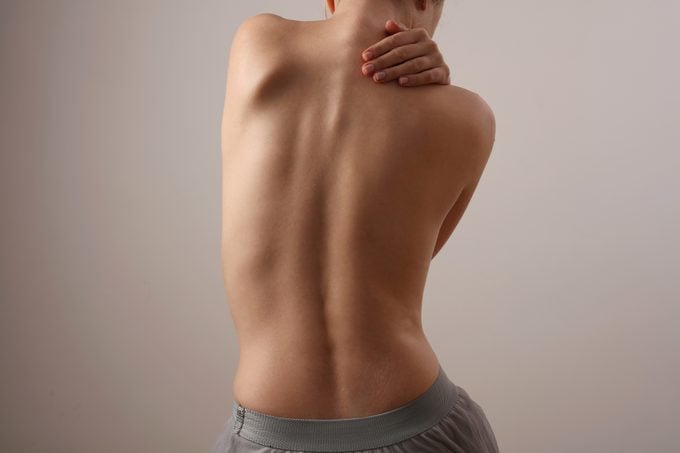
Types of scoliosis in adults
Adult idiopathic scoliosis
Adult idiopathic scoliosis is like a sequel to adolescent idiopathic scoliosis.
In adolescents with curvatures over 50 degrees, the spine will likely keep curving with age, by about 1 to 1.5 degrees per year.
But remember: not all scoliosis is caught in childhood. Sometimes adults diagnosed with adult idiopathic scoliosis are finally seeing symptoms of undiagnosed or untreated pediatric scoliosis.
With a spinal curvature, the adult back has a similar appearance to scoliosis in teenagers. Still, the curves can worsen and be more painful due to disc degeneration and/or sagittal imbalance—a front-to-back imbalance in the spine, which prevents a person from standing up straight.
The majority of people with adult idiopathic scoliosis don’t have trouble functioning and moving about in daily activities. Nor is pain generally an issue.
Degenerative scoliosis
Degenerative scoliosis is the most common form of adult scoliosis, affecting the lumbar—lower—spine in about 38 percent of adults, says Robert K. Eastlack, MD, an orthopedist in La Jolla, California, who is affiliated with Scripps La Jolla Hospitals and Scripps Green Hospital.
Women are much more likely to suffer from it. It usually begins after age 40, when our spines naturally start to deteriorate. And it’s more prevalent in people over 60.
“The causes are multifactorial, including aging/deteriorative changes of the facet joints, genetic predisposition, muscles imbalance, atrophy, dysfunction, and disc degeneration,” says Dr. Eastlack.
Over time, people may struggle with poor posture and loss of balance. Scoliosis might evoke greater back pain due to arthritis or disc disease in the spines of older adults.
And when it comes to back pain, Dr. Eastlack says people with degenerative scoliosis are no more likely to have pain than those without scoliosis.
However, for people who have a more difficult time dealing with pain, physical therapy is the most common treatment, Dr. Eastlack says.
Treatment for scoliosis in children and adults
“Most scoliosis conditions are asymptomatic,” says Dr. Eastlak. With no symptoms, you don’t really need treatment.
Still, some children may require treatment. Doctors individualize treatments based on age, skeletal maturity (that is, whether the bones are still growing), and the degree of spinal curvature.
Each scoliosis case is unique, and treatment plans are adjusted accordingly as the child grows and skeletal maturity is reached.
For instance, some children may need to wear a brace to help the curve from progressing while their bones are still growing. And some people who have extreme curvature and pain may require surgery, but that’s rare.
The same scoliosis treatments are used for children and adults, aside from bracing—it’s ineffective in reducing curvature in adults. That said, adults might wear braces for comfort when needed to alleviate back pain.
Treatment options for scoliosis include:
Observation
Observation and sometimes X-rays are used for children whose curves are mild—less than 25 to 30 degrees.
It’s imperative that a doctor closely monitor a spinal curve in early-onset scoliosis. That’ll make it more likely they can use nonoperative treatment options.
Dr. Garg says children may see their doctor every four to 12 months, depending on the type and degree of curvature.
Observation continues after the growth cycle is complete when there are moderate-size curves of about 45 degrees. This is necessary to ensure curves don’t progress into adulthood.
(Check out the best mattresses for scoliosis support.)
Nonsteroidal anti-inflammatory drugs
For mild back pain, nonsteroidal anti-inflammatory drugs (NSAIDs), such as Advil, Motrin, and Aleve, are the standard choice.
Interestingly, people with curves of less than 30 degrees share the same potential for back pain as people without scoliosis.
Though they’re rarely needed, nerve block injections can help with severe pain.
Casting
Casting is an option for infants and toddlers who are too young and too small for spinal fusion surgery.
The child is placed under general anesthesia, not because there are incisions but so the orthopedic surgeon can correctly position the spine to form and apply the plaster cast.
“Casting is often used in infants and toddlers to try and correct scoliosis. In 30 to 50 percent of cases, it can completely correct the curvature,” says Dr. Garg.
Optimal results are often seen when casting begins before 18 months of age. Depending on the child’s growth, new casts are needed every eight to 16 weeks.
Bracing
Wearing a brace can’t correct curves, but it can prevent further progression, with the ultimate goal of avoiding the need for surgery.
“Bracing is used for scoliosis in growing patients whose curves have demonstrated progression. Usually, it is not prescribed unless the curve is at least 20 degrees,” explains Dr. Davey.
Braces worn day and night are more effective at impeding curvature growth. But children can remove them for showering, swimming, and sports.
Physical therapy
“Physical therapy is often a part of scoliosis treatment. In some cases, specially trained therapists work with patients on scoliosis-specific exercises,” says Dr. Davey. “If a patient’s scoliosis is painful, they will often work with a physical therapist to help resolve the pain.”
Physical therapy doesn’t cure scoliosis, but for people without severe curvature, it can be used in conjunction with other treatments to not only manage pain but strengthen the back and improve balance and flexibility.
Surgery
When non-surgical treatments, physical therapy, and NSAIDs aren’t working, surgery may be necessary to correct progressive spinal curves that cause persistent pain or breathing difficulties, or limit certain body functions.
Spinal fusion is the gold standard for scoliosis surgery. It works by fusing two or more vertebrae so that they heal into a single, solid bone. Surgery realigns the spine and prevents further curvature.
(Famously, Princess Eugenie underwent surgery for her scoliosis as a child.)
Progressive curvature of the spine is more likely to occur in females, Dr. Davey says. “Curves severe enough to require surgery are nearly 10 times more common in girls.”
Spine experts can’t pinpoint the exact reason girls and women have a higher risk, but it’s conceivable that hormonal factors or lower bone density play a role, he explains.
Next, find out whether poor posture and a small hump on your child’s back may point to Scheuermann’s kyphosis.

